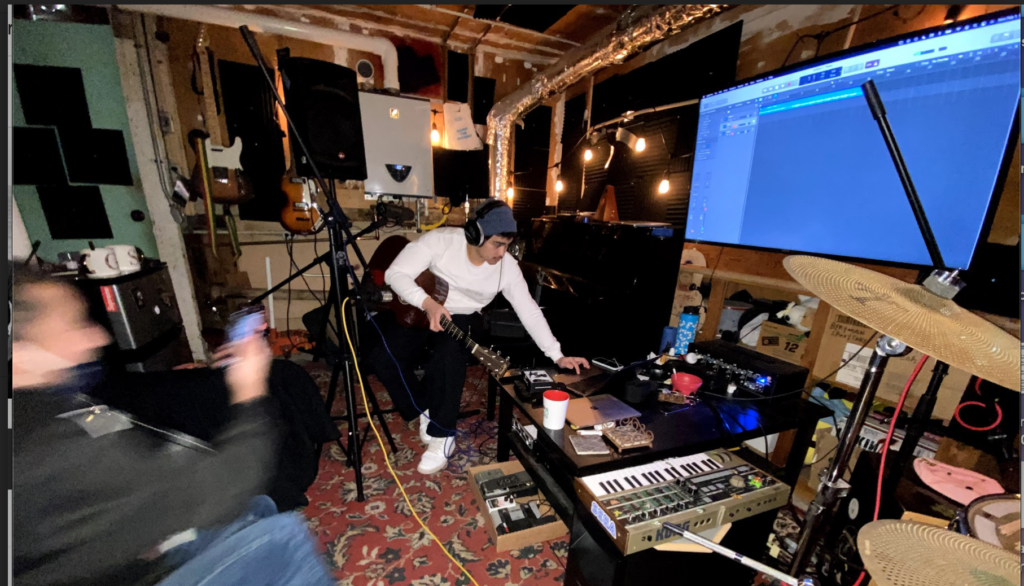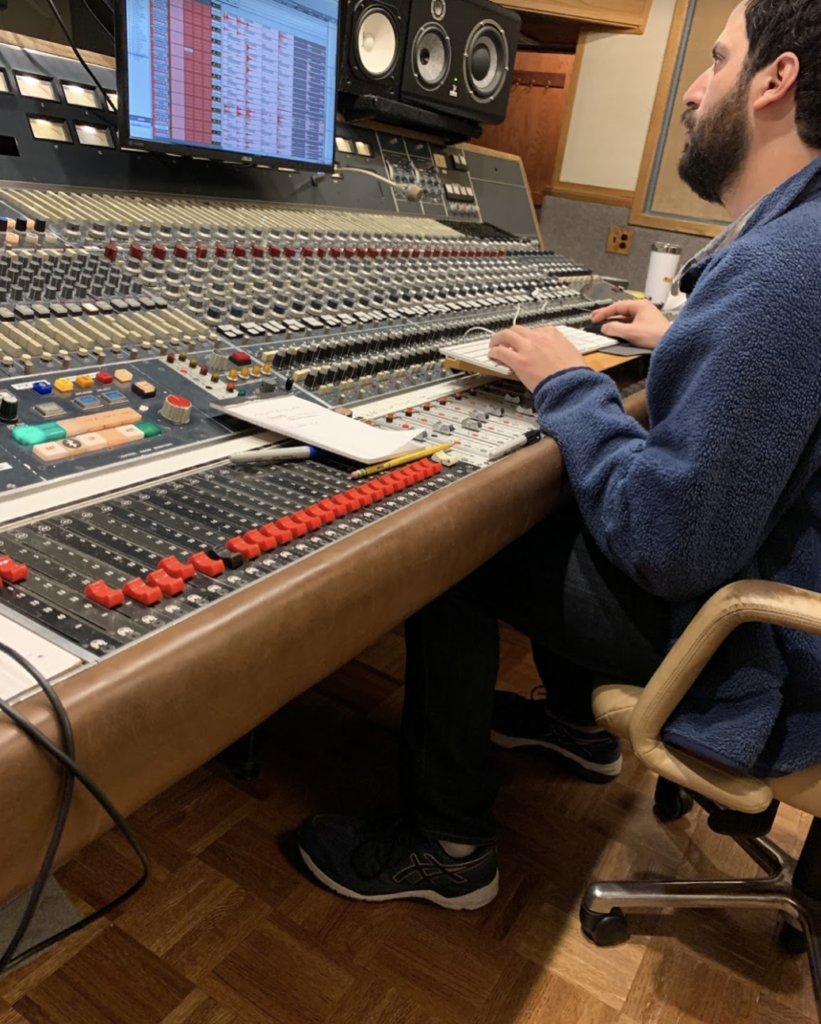Project Haze Song Writing Process

Songwriting
With every conception of a song, it usually always starts off with a guitar or piano chord procession along with a vocal melody. We tend to use the voice memos app on our iPhones to capture the melody so we don’t forget it. We always establish a concrete structure by sticking with vocals and guitar/piano for writing lyrics and sections for the song. Once that’s complete, the first demo gets recorded on logic which we slowly write parts for each band member. Depending on the vibe of the song, we could start with adding digital instrumentation with drum samples, synths/any digital production, or by having each band member play their instruments along with the demo track. Getting every band member to come up with their parts takes the most time since there is a lot of ways the song direction can go, so it’s up to the musician to pick a balance for the right vibe of the song. Since we use a combination of different sound elements for all our songs, it can take months to complete the instrumentation.
Recording Process

The recording process is the most fun yet tedious part of making a song. It isn’t uncommon for us to record dozens of takes per recording session to ensure we get a perfect and performance. When recording vocals, we have to use a sound shield in order to keep the audio isolated and keep the vocal takes as clean as possible. For recording acoustic guitars or pianos, we would use two mics in order to capture the dynamics of the instrument. For bass and electric guitar, we would plug a direct input from the amplifiers to the Audio Interface which gets rid of any unwanted white noise in the recordings. For the electronic instruments, we would use plug-ins like Serum or Vocal synth which is all captured through the DAW and played through the Midi Controller. Lastly, recording drums is the most difficult out of all the instruments with the setup alone could take an hour. The drums alone take 8-9 microphones recording at the same time that captures all the pieces of the drum set. In some cases, if we have difficulty recording at home we would go to Hyde Street Studios to record anything we may need to do.
Mixing and Mastering

Another tedious part of creating a song is mixing. Mixing is important to ensure there is a perfect balance of sound from all your recordings. There are tools such as EQs that help adjust unwanted/wanted frequencies of the source of the recording and Compressors which help squash the sound to get the dynamics much more consistent within the entire song. Techniques such as quantizing are also used, especially for drums, to ensure that recording completely stays on tempo. Our audio engineer Will Chason, who is an experienced producer at Hyde Street Studios, helps us with the mixing process throughout the production of the song by bringing the track stems in Hyde street to use the mixing board to get the best quality out of the recordings. Once the mix is complete, Will takes the mixed project and brings in Hyde street one final time to master the song which makes the song sound radio-ready and released to the public.



